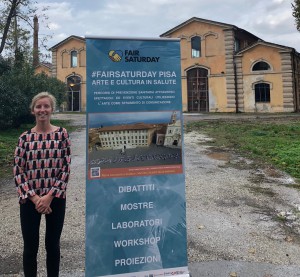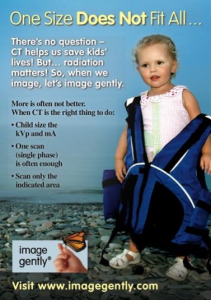“Cured yesterday of my disease, I died last night of my physician” – Matthew Prior, The Remedy Worse Than the Disease (1714).
Buongiorno from Italy!
After finishing the hard slog of 5th-year exams, and the relief that came with passing, I was ready to throw myself into learning the culture and health system of Italy whilst improving my radio diagnostic skills. Italy is known to have one of the best healthcare systems in the world. The World Health Organisation (WHO) ranked it second in the world behind France for overall efficiency in a report published in 2000. In contrastPeru (my second elective placement) is ranked 129th. (For interest New Zealand is 41st, unfortunately losing to Australia by 9 places). I was curious to experience first-hand the efficiency of an Italian hospital.

Annabel outside the refurbished building called MuseodegliStrumenti per Calcolo, where the Fair Saturday was held.
Day one: I met with Professor Davide Caramella, my supervisor for the next 5 weeks. He was inspirational, filled with metaphors, and passionate about limiting tests, interventions, and treatments for patients in order to minimise harm. He gave me the assignment of presenting at the upcoming Fair Saturday. For those of you who have not heard of Fair Saturday, it is a not-for-profit organisation registered in 2015, which creates a global cultural movement to enhance art and culture throughout the world. Fair Saturday is held in cities all over the world on the last Saturday of November, the day following Black Friday. It aims to positively respond to Black Friday, an infamous day of shopping deals, which began in the United States and seems to have spread throughout the world. Fair Saturday is an anti-consumerism movement to encourage “to be” instead of “to have”. This is a principle dear to my heart as I aim to live as minimalist as possible.
The topic of my assigned presentation was “Fair Imaging” – the idea that doctors should limit radiology referrals in order to limit harm from radiation. A metaphor that Professor Caramella used for this was the mythological story of Odysseus, who took 10 years to get home, which is akin to medicine taking the long route (and ordering excessive tests) to find a simple conclusion. Throughout my medical training so far, I have learned the importance of accepting uncertainty and acknowledging that in some cases doctors are not able to cure a patient, which can lead to frustration and the temptation to do further testing and intervention.
My presentation discussed the idea that in medicine, more testing, interventions, and treatments are not always better and can cause harm to patients, generate excess costs, and defy patient’s wishes. In other words, keep as ‘minimalist’ as possible in our use of medicine. This is in keeping with the Less is More movement, which encourages the use of lower cost approaches, clinical thought in the care of patients, and evidence-based practice. The primary goal of the Less is More movement is avoiding harm (‘primum non nocere’), and it is not simply about cost-cutting. This movement has gained traction over the last two decades with campaigns such as Slow Medicine and Choosing Wisely.
I also discussed the Image Gently campaign which has a goal to limit imaging of paediatric patients, and in particular the“One Size Does Not Fit All” campaign (poster shown) which aims to limit harm caused by paediatric CT’s.
Not only did I thoroughly enjoy researching this topic, I learnt a lot from other exhibitions and I am glad to now know of the existence of Fair Saturday as I am sure it will be something I get involved in the future.
Please visit the Fair Saturday website if you would like to know more about Fair Saturday.


No comments yet.
Leave a comment